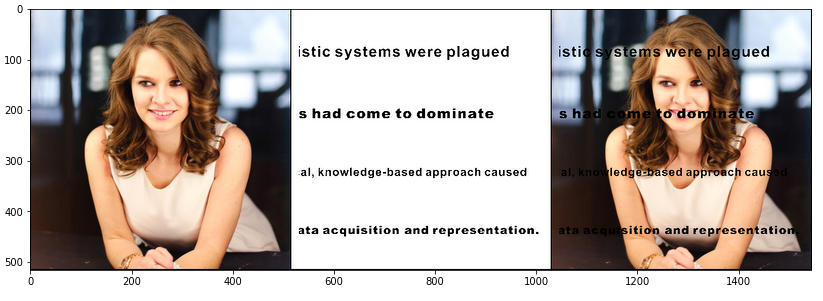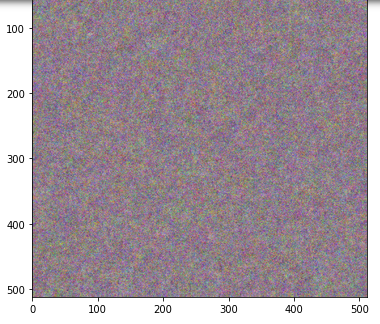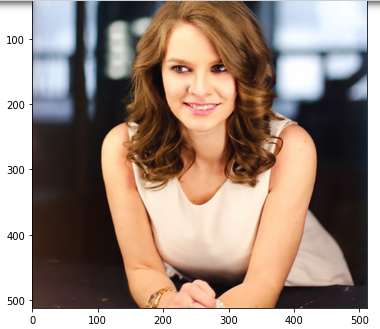共计 4158 个字符,预计需要花费 11 分钟才能阅读完成。
提醒:本文最后更新于 2024-08-30 16:12,文中所关联的信息可能已发生改变,请知悉!
导入库
from __future__ import print_function
import matplotlib.pyplot as plt
%matplotlib inline
import os
os.environ['CUDA_VISIBLE_DEVICES'] = '1'
import numpy as np
from models.resnet import ResNet
from models.unet import UNet
from models.skip import skip
import torch
import torch.optim
from utils.inpainting_utils import *
torch.backends.cudnn.enabled = True
torch.backends.cudnn.benchmark =True
dtype = torch.cuda.FloatTensor
PLOT = True
imsize = -1
dim_div_by = 64设定对象
## Fig 6
# img_path = 'data/inpainting/vase.png'
# mask_path = 'data/inpainting/vase_mask.png'
## Fig 8
# img_path = 'data/inpainting/library.png'
# mask_path = 'data/inpainting/library_mask.png'
## Fig 7 (top)
img_path = 'data/inpainting/kate.png'
mask_path = 'data/inpainting/kate_mask.png'
# Another text inpainting example
# img_path = 'data/inpainting/peppers.png'
# mask_path = 'data/inpainting/peppers_mask.png'
NET_TYPE = 'skip_depth6' # one of skip_depth4|skip_depth2|UNET|ResNet加载水印
img_pil, img_np = get_image(img_path, imsize)
img_mask_pil, img_mask_np = get_image(mask_path, imsize)img_mask_pil = crop_image(img_mask_pil, dim_div_by)
img_pil = crop_image(img_pil, dim_div_by)
img_np = pil_to_np(img_pil)
img_mask_np = pil_to_np(img_mask_pil)img_mask_var = np_to_torch(img_mask_np).type(dtype)
plot_image_grid([img_np, img_mask_np, img_mask_np*img_np], 3,11);
设置参数
pad = 'reflection' # 'zero'
OPT_OVER = 'net'
OPTIMIZER = 'adam'if 'vase.png' in img_path:
INPUT = 'meshgrid'
input_depth = 2
LR = 0.01
num_iter = 5001
param_noise = False
show_every = 50
figsize = 5
reg_noise_std = 0.03
net = skip(input_depth, img_np.shape[0],
num_channels_down = [128] * 5,
num_channels_up = [128] * 5,
num_channels_skip = [0] * 5,
upsample_mode='nearest', filter_skip_size=1, filter_size_up=3, filter_size_down=3,
need_sigmoid=True, need_bias=True, pad=pad, act_fun='LeakyReLU').type(dtype)
elif ('kate.png' in img_path) or ('peppers.png' in img_path):
# Same params and net as in super-resolution and denoising
INPUT = 'noise'
input_depth = 32
LR = 0.01
num_iter = 6001
param_noise = False
show_every = 50
figsize = 5
reg_noise_std = 0.03
net = skip(input_depth, img_np.shape[0],
num_channels_down = [128] * 5,
num_channels_up = [128] * 5,
num_channels_skip = [128] * 5,
filter_size_up = 3, filter_size_down = 3,
upsample_mode='nearest', filter_skip_size=1,
need_sigmoid=True, need_bias=True, pad=pad, act_fun='LeakyReLU').type(dtype)
elif 'library.png' in img_path:
INPUT = 'noise'
input_depth = 1
num_iter = 3001
show_every = 50
figsize = 8
reg_noise_std = 0.00
param_noise = True
if 'skip' in NET_TYPE:
depth = int(NET_TYPE[-1])
net = skip(input_depth, img_np.shape[0],
num_channels_down = [16, 32, 64, 128, 128, 128][:depth],
num_channels_up = [16, 32, 64, 128, 128, 128][:depth],
num_channels_skip = [0, 0, 0, 0, 0, 0][:depth],
filter_size_up = 3,filter_size_down = 5, filter_skip_size=1,
upsample_mode='nearest', # downsample_mode='avg',
need1x1_up=False,
need_sigmoid=True, need_bias=True, pad=pad, act_fun='LeakyReLU').type(dtype)
LR = 0.01
elif NET_TYPE == 'UNET':
net = UNet(num_input_channels=input_depth, num_output_channels=3,
feature_scale=8, more_layers=1,
concat_x=False, upsample_mode='deconv',
pad='zero', norm_layer=torch.nn.InstanceNorm2d, need_sigmoid=True, need_bias=True)
LR = 0.001
param_noise = False
elif NET_TYPE == 'ResNet':
net = ResNet(input_depth, img_np.shape[0], 8, 32, need_sigmoid=True, act_fun='LeakyReLU')
LR = 0.001
param_noise = False
else:
assert False
else:
assert False
net = net.type(dtype)
net_input = get_noise(input_depth, INPUT, img_np.shape[1:]).type(dtype)# Compute number of parameters
s = sum(np.prod(list(p.size())) for p in net.parameters())
print ('Number of params: %d' % s)
# Loss
mse = torch.nn.MSELoss().type(dtype)
img_var = np_to_torch(img_np).type(dtype)
mask_var = np_to_torch(img_mask_np).type(dtype)迭代
i = 0
def closure():
global i
if param_noise:
for n in [x for x in net.parameters() if len(x.size()) == 4]:
n = n + n.detach().clone().normal_() * n.std() / 50
net_input = net_input_saved
if reg_noise_std > 0:
net_input = net_input_saved + (noise.normal_() * reg_noise_std)
out = net(net_input)
total_loss = mse(out * mask_var, img_var * mask_var)
total_loss.backward()
print ('Iteration %05d Loss %f' % (i, total_loss.item()), '\r', end='')
if PLOT and i % show_every == 0:
out_np = torch_to_np(out)
plot_image_grid([np.clip(out_np, 0, 1)], factor=figsize, nrow=1)
i += 1
return total_loss
net_input_saved = net_input.detach().clone()
noise = net_input.detach().clone()
p = get_params(OPT_OVER, net, net_input)
optimize(OPTIMIZER, p, closure, LR, num_iter)Starting optimization with ADAM
Iteration 00000 Loss 0.120503 
Iteration 00050 Loss 0.016066 
Iteration 06000 Loss 0.000105
正文完
发表至: 图像处理
2022-08-14


